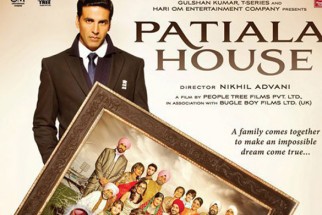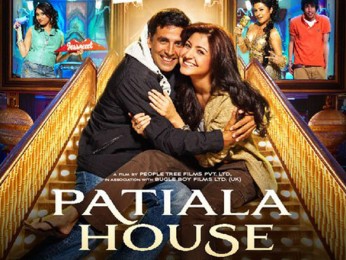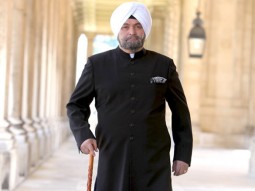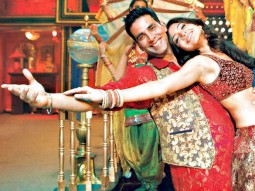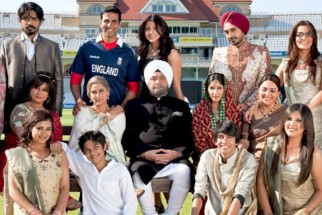The stage is set, breaths are held back and he (Nikhil Advani) is about to start his new inning. The house is divided in two groups; those who had seen him score a century on his debut (KHNH) and those who were disappointed by him getting out on a duck in the recent most game he played (CC2C). This is a test of nerves for him; this is a case of rediscovery, redemption and re-winning the heart of those who lost interest in him. Will he prove to be an “Underdog†or will the selectors throw him out of the team after another failure?
Let’s take a look at the highlights of this game.
• He has been given a huge target to chase (to wash out the bad taste of CC2C and re-win his fans of KHNH days).
• He shows his class in the very first over of his inning (the opening song and introduction of Guttu’s Character). He is not aggressive at all but takes very good care of his footwork, keeps a keen eye on the ball and shows us that if he doesn’t mess it up, he is in for a solid knock this time.
• He paces his inning cautiously and silently (the first half); he doesn’t take much risk but manages to keep the score board ticking. The strike rate is not too high, but he manages to keep his wicket intact.
• Oops!!! He lost his concentration in middle of the first powerplay, as he seems to be trying too many shots at the same time (introducing too many characters at the same time). This confuses the viewer in guessing which shot will yield what results?
• But this wide variety of shot-selection gradually starts making sense towards the end of the second powerplay (after the mid of first half, as we come to know relevant dilemmas of these characters).
• Till the time he reaches mid of his inning, he seems to regain his composure and is well middling the ball when the umpire calls for a drinks break (interval)
• There seems to be a clear change of tactics after his return to the crease (post-interval). Instead of playing serious cricketing shots, he is going for slogs and edges. (The post-interval scenes where the family is trying to cover up Guttu). Everyone starts feeling the fear that he is soon going to throw his wicket away. But luck is on his side, as even his slogs produce some valuable runs and his edges are not caught. (These scenes seem illogical and naïve, yet they bring a smile on your face and keep you glued).
• The inning has reached its final ten overs and BOOM comes the first boundary. (when all the family is dancing on “rola pay gayaâ€. The execution of this song is brilliant with two different modes of celebration reflecting the clash between inner and outer personalities of the inhabitants of Patial House).
• Shortly after this first boundary, comes a HUGE Sixer (when Guttu’s dad discovers what the family is hiding).
• Now he takes the batting powerplay and pumps up the run-rate. There is not a single ball which goes wasted. The 4s and the 6s keep on increasing the heartbeat of the viewer. Those who have played or watched a similar inning (experience similar to Guttu’s character; including this reviewer) can’t hold back the tears. These tears are a mix of joy and sorrow; déjà vu and nostalgia; anticipation of victory and fear of loss.
• He hits a Sixer on each ball of the second last over (the penultimate portion, where the final match has begun). He almost reaches his target in this over, with only a boundary required in the last over.
• The required boundary is hit on the very first ball of the last over. The shot selection seems a bit awkward but the moment the ball leaves the bat, it races to the boundary. (placement of “Laung da Lashkaa†seems strange, but the moment it starts playing, you just forget everything and lose yourself in the beauty of this song).
• The target is successfully achieved. The bad taste of his last inning is washed away and Nikhil Advani proves himself to be as good a player as he was when he started his career. Lost fans (including this reviewer) are re-won and people leave the stadium satisfied.
Nikhil proves his capability, but this match couldn’t have been won without the strength in Nikhil’s two shoulders and one solid bat.
• Nikhil’s front shoulder is Akshey Kumar, who is simply mind-blowing in this match. One seriously wonder why the strength of this shoulder is wasted in matches which have nothing for him to accomplish or prove? In this latest match (Patiala House), he proves like never before that he is a extremely powerfull. He is admirably restrained. This by far is his most powerful performance.
• If Akshey is the front shoulder, then Rishi Kapoor is the hind shoulder while Nikhil is batting. Rishi gives that extra cushion in defense and extra aggression in attack. He is outstanding as Guttu’s father.
• The two shoulders carry a very strong bat of screenplay and dialogues. It did shimmer a bit in the first half of the inning, but was rock solid in the second.
While playing such a hectic inning, one needs some refreshment, which is provided by Anushka Sharma. Every time she comes on the pitch, the whole game is refreshed and glowing with sweetness and charm. (First “Band Baaja Barat†and now this; the girl has really impressed me beyond expectations)
Nikhil also uses some very carefully chosen padding equipment in shape of S-E-L’s music (“Mein kyoon jagoon†is the soul of the movie; “Rola Pay Gaya†is very intelligently unveiled and “Laung da Lashkara†is an addiction for this reviewer). There is also very good support by Dimple’s relaxants, physiotherapy of the supporting cast and good grounds-men in shape of cinematographer and choreographer.
Overall, this has been an outstanding match to witness and has all the merits to be viewed again in repeat telecast.

